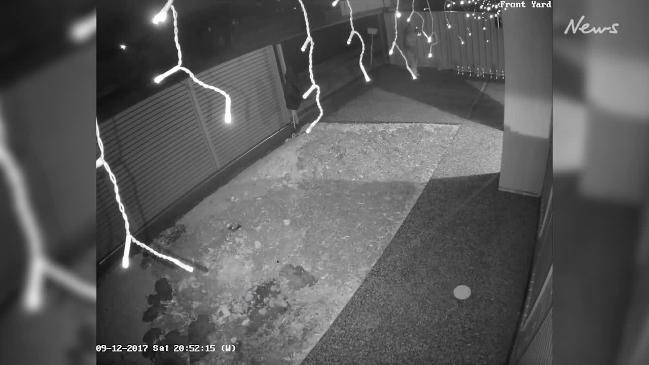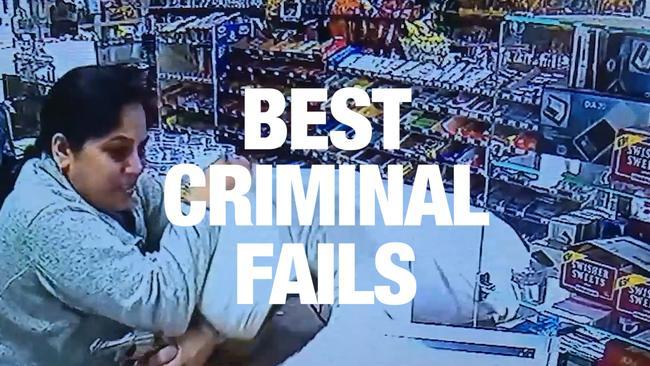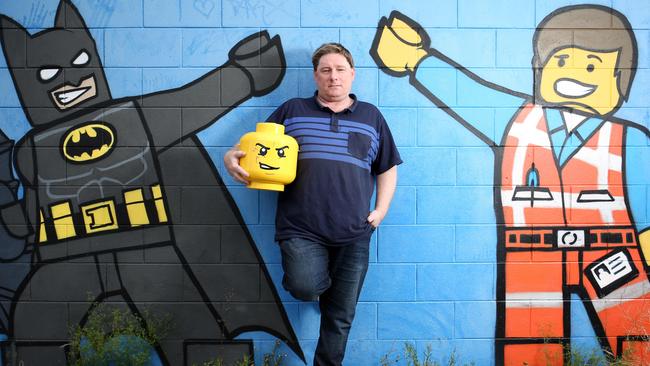SA crime Map: see how crime rates in your area have changed since 2012
Many South Australians consider moving to the Adelaide Hills for a tree change. Now, a new lure for the Hills has emerged as it shapes up as one of the state’s safest havens from crime. EXPLORE OUR SA CRIME MAP.

SA News
Don't miss out on the headlines from SA News. Followed categories will be added to My News.
- Data shows the worst Adelaide suburbs for break-ins
- Police operation targets rising Adelaide house break-ins
- South Australia’s female crime rate doubling
Many South Australians consider moving to the Adelaide Hills for a tree change. Now, a new lure for the Hills has emerged as it shapes up as one of the state’s safest havens from crime.
An advertiser.com.au analysis of crime trends since 2012 shows vast areas of the Adelaide Hills have among the lowest crime rates in the state.
The analysis, which tracks crime for every suburb and town across SA, shows parts of the Eyre Peninsula, albeit with much lower populations, are also safe places to call home.
Adelaide’s northeastern suburbs are among the big improvers for suburbs with decreasing crime rates, while suburbs in the north continue to have higher rates.
The data also reveals that opportunistic criminals seeking quick cash are increasingly turning to “soft targets” such as shoplifting and fraud, as opposed to riskier, more difficult targets such as banks.
Analysis by The Advertiser has revealed the number of offences categorised by SA Police as “theft from shops” has risen by 44 per cent in the past six years.
Fraud, deception and related offences rose by 34 per cent in the same period, from 2012-13, to 2017-18.
Flinders University Strategic Professor in Criminal Justice Andrew Goldsmith said rises and falls in types of crime could sometimes be explained by changes in police tactics, legislation or how crimes were classified.
USE THE MAP TO EXPLORE CRIME IN YOUR AREA
**How to read the map**
- Areas shaded in green saw a decrease in the crime rate, 2012-12 to 2017-18. The darker the green, the larger the decerase.
- Areas in red saw a rise in crime over the same period. The darker the red, the bigger the increase. Areas not shaded had insufficient data for the purposes of our analysis.
“One observation is that as target-hardening measures make some targets, such as banks, harder to rob, some criminals will turn their attention to softer targets,” Professor Goldsmith said.
“Both theft from shops and deception present softer targets, generally speaking, so that those seeking quick cash may turn to theft.”
“Deception, depending on what kind we’re discussing, will often relate to targeting higher value targets — those presumed to have significant cash or other valuable assets — in order to get larger sums than might be obtained from theft from shops.”
Apart from financial fraud, deception offences also include identity thefts, dishonest dealings with documents, illegally interfering with merchandise and cheating at gambling.
Fraud was increasingly reported from Elizabeth Vale and Elizabeth Downs, while Adelaide was the most prevalent location in 2017-18 with 337 reports.
An SA Police spokesman said technology played a large part in the rise of both theft in shops and fraud.
“Technology and easier disposal methods for stolen goods using the internet has increased the ability for some to sell or swap goods and maintain anonymity,” the spokesman said.
New software is helping police identify offenders.
Thefts in shops at Walkerville, Bolivar and Seaview Downs worsened over six years while Adelaide city, Oaklands Park, Noarlunga Centre and Elizabeth — where shopping centres are located — were the most targeted.
Other theft offences such as stealing from vehicles and car theft dropped by 12 per cent and 21 per cent respectively.
Deception offences also skyrocketed. South Australians lost $5.4 million to scammers last year, according to the Australian Competition and Consumer Commission’s Scamwatch report.
University of South Australia School of Law Professor Rick Sarre said criminals were avoiding confrontation and turning to cyber crime to target victims.
“People are far more likely to avoid the confrontation of breaking into someone’s home for example, and send out spam emails to get five suckers who will share their details,” Prof Sarre said.
He said one possibility for the rise in shop theft could simply be business owners reporting more crimes.
“Because so many shops have been able to afford CCTV all they have to do is hand it over to police.
“They don’t have to make a statement and they avoid being a witness in court.”
Overall crime rates across the state last year were at their lowest in the six-year period from 2012-13 and 2017-18. There were 5934 reported crimes per 100,000 people, compared to the worst year, 2012-13, when the rate was 6621.
Prof Sarre said a reduction in crime was a national long-term trend, excluding some categories such as sexual assault offences and e-crime.
“Crime statistics has a lot to do with reporting … there’s a lot more sexual assaults because people are more likely to report them,” Prof Sarre said.

An online interactive map created by The Advertiser showed the shift in crime trends over the six-year period.
Elizabeth, Bolivar and Gawler have some of the highest overall crime rates in SA, with theft being the most common offence.
While some areas such as Forest Range and Sampson Flat showed increasing offending, the crime rate is very low with less than eight offences recorded in 2017/18.
Adelaide Hills was one of the safest regions to live in SA while Adelaide’s northeast crime rates are some of the most improved suburbs.
Graffiti and aggravated robbery have dropped by about half over six years, followed by serious criminal trespass, serious assaults causing injuries and threatening behaviour.
After analysing the map, Prof Goldsmith said pink or red — or medium to high crime increases in a suburb — didn’t always mean the area was bad to live in.
“Compare Norwood (green: declining crime rate) with Reynella East (pink: more offences). Norwood has a higher crime per capita rate than Reynella. On that basis, a lot of areas in red or pink remain decent places to live, even though there may be some increases in crime over time.”
He said the overall trend was “reassuring” because it showed measures to deal with crime were “generally adequate to the nature and size of SA’s crime phenomenon”.
LEGO DEALER DOES HIS BLOCK
By Josephine Lim
FOR toy store owner Steve Campbell, 2018 has been a difficult year that was made even tougher when thieves raided his business for a third year in a row before Christmas.
Laygo on South Rd, St Marys was broken into in late November and more than $10,000 of toys — mostly Lego — were stolen.

Mr Campbell was already suffering financially and emotionally after being diagnosed with leukaemia, demanding him to limit trading all year.
“(Last) year had hurt more than anything,” he said.
Mr Campbell said police caught one suspect and were still tracking down the second.
Lego from a Goodwood Rd toy store were also stolen last month.
“Legos are easy to sell, I see it on Gumtree or (online) marketplace — $200 Legos getting sold for $75.
“There is no way they could sell it that cheap when I can only get it for $140,” Mr Campbell said.


